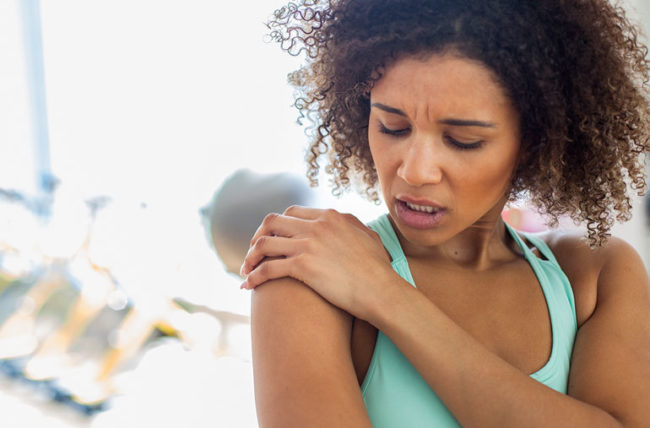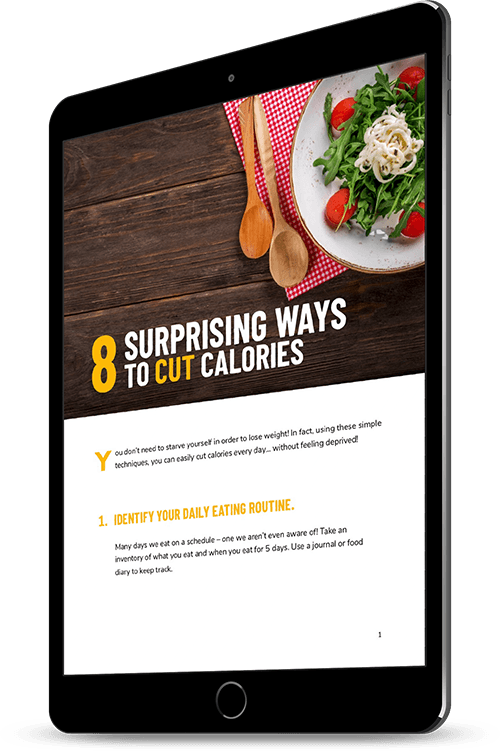Who Else Wants to Exercise Without Getting Sore?


You walk out of the gym congratulating yourself for completing a tough workout, but the real struggle starts the next day. That’s when your shoulders stiffen, and your lower back aches.
These symptoms are called delayed onset muscle soreness (DOMS). Experts used to believe that it was due to lactic acid building up. However, now there’s general agreement that inflammation is the culprit.
Whatever the cause, you can find relief. Use these suggestions to prevent muscle soreness or speed up your recovery.
Things to Do Before Your Workout:
1. Drink water. Staying hydrated decreases your risk for inflammation and cramps. Individual needs vary, but pale urine is usually a reliable sign that you’re drinking enough water.
2. Snack on fruit. You can also fight inflammation and cramps with certain fruits. Enjoy a banana or some pineapple, raspberries, and tart cherries.
3. Sleep well. Working out when you’re sleep-deprived could actually make your muscles weaker. Stick to a consistent bedtime and aim for at least 8 hours of sleep each night.
Things to Do During Your Workout:
1. Pace yourself. DOMS is usually most intense when you overexert yourself. Adding challenges to your workouts gradually will allow you to shape up with greater comfort and less risk of injury.
2. Use correct form. You can also protect yourself by performing exercises properly. Study videos from reliable sources or work with a trainer if you have questions.
3. Warm up. Cold muscles are more vulnerable. Start your workout with about 10 minutes of dynamic stretches and other gentle movements.
4. Cool down. Ease your body back into life outside the gym. Jog slowly or do other easy exercises to transition back to a resting state.
Things to Do After Your Workout:
1. Stretch again. Stay limber and expand your range of motion by stretching your muscles while they’re still warm. This is an ideal time to breathe deeply and hold static poses.
2. Keep moving. You might be tempted to stay in bed when it hurts to walk, but that would make your symptoms worse. Push yourself to walk around a little or ride your bike.
3. Apply ice. Studies show that ice baths and ice packs can be highly effective for treating muscle soreness. You may also want to try contrast showers, alternating between moderately hot and cold water, as long as you have no history of cardiovascular disease. In that case, soaking in a warm bath with Epsom salts may be a safer alternative.
4. Massage yourself. Treat yourself to a professional massage or create the experience at home. Use your hands or foam rollers to rub the areas where you’re sore.
5. Wear compression garments. Some athletes wear compression socks and other garments to speed up recovery by increasing blood flow and decreasing swelling. Be sure to check your skin daily for any signs of irritation or redness.
6. Eat more protein. Giving your body more protein may help your muscles to repair themselves. Good sources include fish, beans, dairy products, and soy. You’ll metabolize it more effectively if you incorporate some protein into each meal and snack instead of saving it for dinner.
7. See your doctor. It’s important to distinguish between DOMS and serious injuries that may require medical treatment. See your doctor if you experience sudden pain while working out or if your symptoms last for more than 3 days.
You can build muscles and stay fit without experiencing muscle soreness. However, any minor aches can usually be relieved with simple home treatments. Listening to your body and respecting its limits will help you to lead a long and active life.
CLICK HERE to Explore Our Free Online Courses


Responses